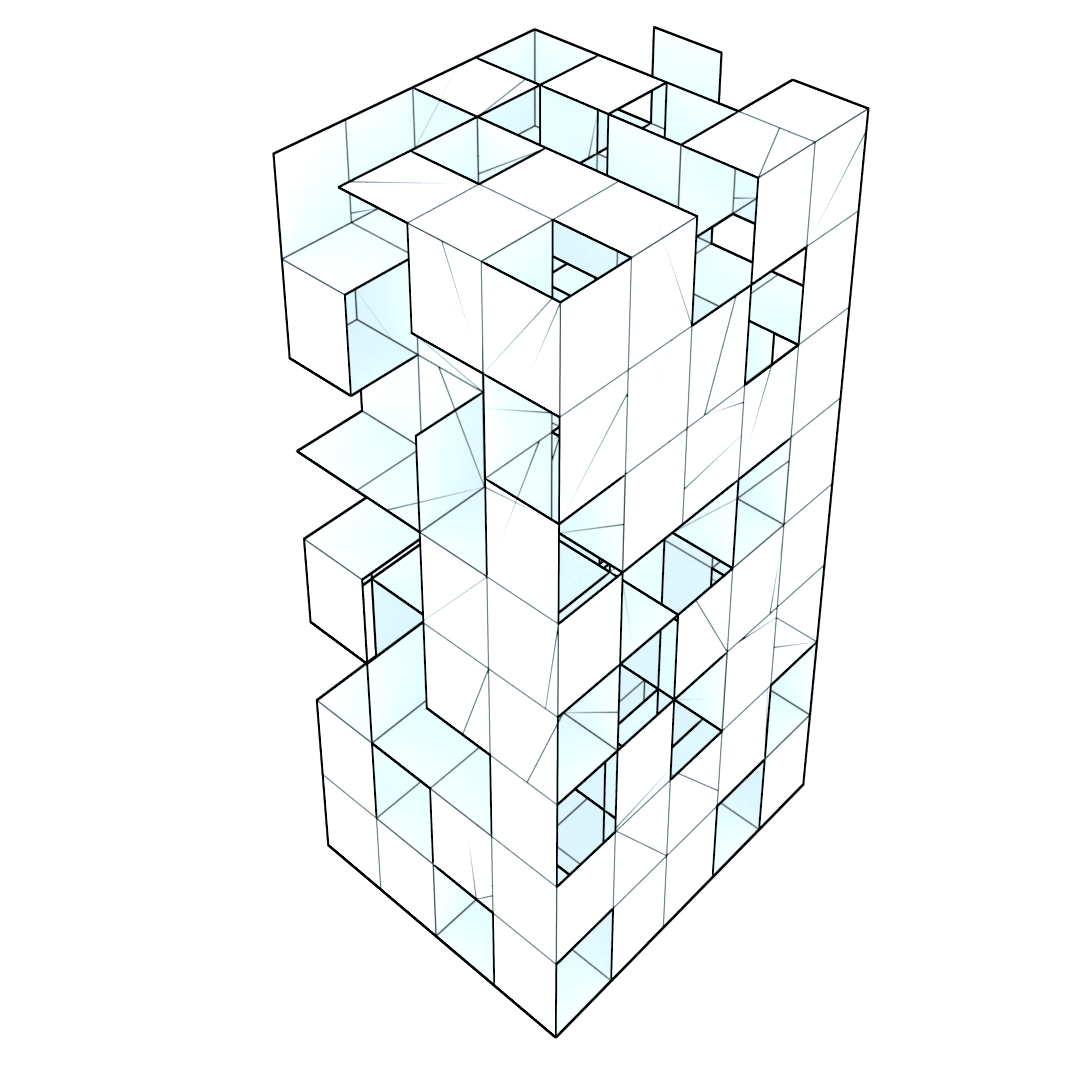Designing environments for human inhabitation can be characterised as the process of formalising multiple objectives into a coherent physical artefact. Design objectives derive from needs and/or desires of the agents involved in the aforementioned process.
Designing environments for human inhabitation can be characterised as the process of formalising multiple objectives into a coherent physical artefact. Design objectives derive from needs and/or desires of the agents involved in the aforementioned process. Given the complex nature and diversity of said objectives, determining the impact that each one has in the design outcome is virtually impossible. Consequently, design is typically tackled as a synthetic process, an iteration between the generation and evaluation of artefacts, searching for those capable of accommodating said objectives, which Simon1 defines as ‘satisficing’ alternatives.
In this study a ‘generate and explore’ approach is used to investigate the opportunities that digital morphogenesis techniques open in the search for novelty in design.
The introduction of computers to the design practice, in the 1960s, put a series of methods for the generation of form at the disposal of designers, opening the possibility to produce diverse design spaces beyond human capacity. However, since their introduction, the development of digital tools has mostly focused on optimising performance-based aspects of design, searching to produce efficiencies where possible, thus neglecting the initial stages of the process, where the articulation between the multiple objectives has to be achieved. These advancements have had very little impact on the outcomes of the design process itself.
The goal of this research is to build a tool, as proof of concept, capable of assisting designers in the production of novel designs. In order to do so, a series of digital implementations of generative models are developed and examined, in search of suitable strategies for the building of the aforementioned tool.
For the purpose of this research, an action research strategy has been adopted. This approach is based on cycles of proposition / implementation / data collection / observation cycles, through which the progressive development of the tool is possible.

In the first implementation a novel composite Cellular Automata (CA) is introduced. Consisting of multiple, regularly spaced, interleaved one dimensional CA, this model evolves the boundaries of spatial units. Using cells with simple binary states, the model allowed for the production of a vast array of different spatial topologies. The focus for this approach was set on its capacity to form complex spatial patterns, where their characteristics emerge as a consequence of the evolution of the system, rather than from prescriptive design decisions. The model and its outcomes were systematically examined, by analysing the dynamics of a series of instances of the model by varying initial conditions and transition rules. Subsequently, the capacity of the composite CA is to generate aggregate spatial units to match the characteristics of specific spatial configurations was evaluated using the ‘Unite d’habitation’ by Le Corbusier as a benchmark.
Though the composite CA system proved to be capable of generating complex spatial configurations, it can be argued that this approach is not suited for the search of satisficing alternatives to address a design task, given the randomness of the generative process. Therefore, a different approach, one that enables a more directed stochastic search, was devised and implemented, using a genetic algorithm.
The following model implementations use a non-dominated sorting genetic algorithm (NSGAII) to generate, evaluate and evolve a population of potentially satisficing designs. In order to guide the generative process, the model requires the definition of multiple design objectives as independent fitness measures. Each generation of the evolutionary process is organised in non-dominated fronts, representing groups of equally adequate solutions to the problem being addressed. In order to ensure that the alternatives being produced are as diverse as possible, so the probability of finding novelty is increased, a diversity measure was introduced in addition to the objectives being evaluated.

A series of simulations are performed using our model, investigating the emergent spatial characteristics of the individuals in a given population. Different sets of design objectives, extracted from existing architectural landmark buildings, have been used as a reference to understand the capabilities and shortcomings of the model. These objectives are devised to look at spatial characteristics, such as the amount of available surface for walking, the porosity of the external enclosure, the number of spatial units, presence of cross ventilation, and others. It is important to note that in the evaluation of individuals we use a combination of chromosome analysis and graph metrics, which allows us to represent tectonic and relational properties of the spatial configurations being produced. Also, it is essential to clarify that the designer is considered as a fundamental part of the system, both as generator of the objective functions, as well as decision-maker, regarding the characteristics of the designs being produced.
Evolutionary strategies enable designers to systematically search for novelty
The proposed implementation enables designers to assign meaning to the spatial units in a way that comes much closer to how space is designed: through the identification and characterisation of its boundaries. Also, by understanding the formal implications of the objectives, it becomes possible to limit the scope of search of design space.
The results of the experiments outlined above suggest that a multi-objective evolutionary approach can be of great use in assisting designers in the exploration of large design spaces, which can enable the discovery of novel, more effective means to shape to our built environments.
Footnotes
- Simon, H: Rational choice and the structure of the environment. In: Psychological review 63.2, p. 129 (1956)